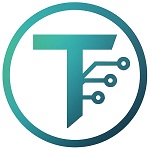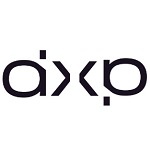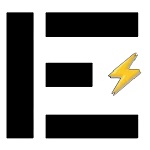DEX
| Projects | Status | Date start | Raised | Launchpad | Ecosystem | X score | Interest lvl | Industry | ||
|---|---|---|---|---|---|---|---|---|---|---|
IDO Upcoming IDO | Jul 11, 2025 | Exchanges & Wallets +4 | ||||||||
ICO IDO Ongoing Ongoing IDO | Apr 20, 2025 | Trading & Investing +7 | ||||||||
ICO Pre-Sale | Apr 20, 2025 | AI +4 | ||||||||
ICO Pre-Sale | Apr 20, 2025 | $1,2M | Software +8 | |||||||
| Apr 20, 2025 | $3M | Finance +5 | ||||||||
| Apr 20, 2025 | $25,94M | Exchanges & Wallets +3 | ||||||||
| Apr 20, 2025 | $2,5M | Blockchain +4 | ||||||||
| Apr 20, 2025 | $20,2M | Exchanges & Wallets +3 | ||||||||
| Apr 20, 2025 | $11,8M | Exchanges & Wallets +3 | ||||||||
| Apr 20, 2025 | Exchanges & Wallets +3 | |||||||||
| Apr 20, 2025 | DeFi +1 | |||||||||
| Apr 20, 2025 | DEX | |||||||||
| Apr 20, 2025 | Trading & Investing +3 | |||||||||
IDO Past | Jun 05, 2025 | AI +6 | ||||||||
ICO | Jun 05, 2025 | Exchanges & Wallets +3 | ||||||||
| Jun 05, 2025 | $4M | Blockchain +5 | ||||||||
ICO Past | Jun 05, 2025 | DeFi +2 | ||||||||
IDO | TBA | Exchanges & Wallets +4 | ||||||||
IDO Past | May 23, 2025 | Crowdfunding & Lending +6 | ||||||||
| May 23, 2025 | Crowdfunding & Lending +4 | |||||||||
| May 23, 2025 | Crowdfunding & Lending +5 | |||||||||
| May 23, 2025 | DeFi +1 | |||||||||
| May 23, 2025 | $1,2M | DeFi +1 | ||||||||
| May 23, 2025 | $4M | Exchanges & Wallets +2 | ||||||||
ICO IDO Past | May 20, 2025 | Finance +2 | ||||||||
IEO Past | May 02, 2025 | DeFi +4 | ||||||||
| May 02, 2025 | Exchanges & Wallets +3 | |||||||||
IDO | May 20, 2025 | $0,5M | Crowdfunding & Lending +4 | |||||||
| May 20, 2025 | $6,9M | Multi-Chain Platform +3 | ||||||||
IDO | TBA | Crowdfunding & Lending +5 | ||||||||
IDO Past | Apr 13, 2025 | Exchanges & Wallets +2 | ||||||||
| Apr 13, 2025 | $26M | Blockchain +10 | ||||||||
ICO IDO Past | Apr 01, 2025 | Crowdfunding & Lending +5 | ||||||||
ICO IEO Past | Apr 16, 2025 | Exchanges & Wallets +5 | ||||||||
| Apr 16, 2025 | $37M | Software +4 | ||||||||
IDO Past | Mar 27, 2025 | DeFi +1 | ||||||||
| Mar 27, 2025 | Crowdfunding & Lending +5 | |||||||||
ICO Past | Mar 27, 2025 | Meme +1 | ||||||||
ICO Past | Mar 27, 2025 | Trading & Investing +3 | ||||||||
ICO | Mar 27, 2025 | $2,35M | Trading & Investing +4 | |||||||
IDO Past | May 13, 2025 | DeFi +1 | ||||||||
IDO Past | Mar 29, 2025 | Exchanges & Wallets +4 | ||||||||
IDO Past | Mar 27, 2025 | Data Analytics +6 | ||||||||
IDO Past | Mar 27, 2025 | Crowdfunding & Lending +5 | ||||||||
| Mar 27, 2025 | Trading & Investing +3 | |||||||||
IDO Past | May 16, 2025 | Software +5 | ||||||||
IDO | Mar 07, 2025 | AI +6 | ||||||||
IDO Past | Mar 07, 2025 | Sport +9 | ||||||||
| Mar 07, 2025 | $9M | Multi-Chain Platform +1 | ||||||||
ICO Past | Mar 07, 2025 | $9,75M | DeFi +1 | |||||||
What is DEX
A decentralized exchange is a service for exchanging cryptocurrencies that is fully or partially built on blockchain with smart contracts in its operation.
On a technical level, DEXs are censorship-resistant and accessible to everyone. This means that no team authorization is required to trade a certain asset, and a cryptocurrency wallet is enough to interact with the platform.
Another advantage of decentralized exchanges is that the trader’s funds remain under his management right up to the moment of exchange. This eliminates the possibility of assets being blocked.
How does DEXs work
In centralized platforms, assets are stored in the exchange’s accounts and transactions go through the exchange’s servers. In DEXs everything is different: users remain the owners of their assets throughout the trade, and each exchange is carried out directly between the wallets of participants.
Decentralized exchanges are based on smart contracts, i.e. small programs that execute automatically in the blockchain without human intervention.
Depending on the architecture, decentralized exchanges can use different mechanisms to process transactions. The best known are:
- Decentralized order book. Works roughly the same way as CEX, but all transactions are conducted in the blockchain, which requires a large number of transactions and corresponding commission costs. Due to its high cost, it has not been widely adopted.
- Centralized order book. A combination of CEX and DEX architecture, where orders are placed and aggregated on centralized servers, but the exchange itself takes place via a blockchain transaction. It is more economical and faster than the above mechanism, but less secure and still requires trust in the platform.
- Automated Market Maker (AMM). Exchanges take place using a value algorithm and liquidity pools that hold reserves for transactions. This mechanism requires significantly fewer resources than a decentralized order book, but still retains the benefits of distributed execution.
The majority of currently popular DEXs, such as Uniswap and PancakeSwap, use the AMM algorithm in various modifications.
Liquidity Pools
A liquidity pool is a smart contract that is holding a stock of two or more assets for exchange.
A kind of analog of a trading pair on centralized exchanges. Several hundreds or even thousands of pools can operate within a single DEX.
Liquidity (assets for the pool) can be provided by any owner of capital, the so-called liquidity provider. For his services, he receives a portion of the commission from the exchanges conducted through the pool, and in some cases, additional rewards from the exchange.
To become a liquidity provider, as a rule, it is necessary to deposit both assets of an exchange pair into the pool at once. For example, in the ETH/USDT pool you need to deposit 50% of the desired amount in ETH and 50% in USDT.
It is important to take into account that each liquidity pool is, in fact, a separate market with its own balance of supply and demand, so price gaps may occur between different pools and platforms. They appear due to the processing of large transactions or withdrawal of liquidity and in most cases are quickly eliminated by arbitrage traders.
Liquidity aggregators
Another decentralized tool for exchanging cryptocurrencies are liquidity aggregators. These services allow you to use pools of several dozens or even hundreds of DEX for a transaction.
The main mechanism of the aggregator is a router – a special smart contract that compares prices in different pools to determine the most favorable rate and the site for the transaction.
In addition, the aggregator can split a large trade into several smaller ones and send them to different pools to minimize slippage, or perform a multi-step exchange if it is more profitable. These features simplify traders’ activities, as they do not need to monitor dozens of DEXs manually.Externally, aggregators are virtually the same as DEXs, but transactions through them can take longer and in some cases with higher commissions. Examples of such platforms are 1inch, LlamaSwap or Jupiter.
Due to technical peculiarities and relatively complex architecture, the use of decentralized sites is associated with additional risks. Among them:
- Slippage. This is the difference between the expected and final price of a transaction. Slippage happens on centralized exchanges, but in AMM there can be stronger deviations.
- Non-constant losses. The price of assets in the pool can fall below the value on centralized exchanges, resulting in losses for the liquidity provider if it decides to withdraw assets at that point.
- Limited functionality. Most DEXs do not allow for derivatives trading, leverage or different order types. Such platforms do exist, but the risks associated with them are higher than in similar centralized services.
- Technical difficulties. The interface of decentralized exchanges seems simple, but conducting an exchange requires taking into account commissions, slippages, interactions of various chains and pools. For a beginner, this is much more complicated than placing an order on CEX.
- Fraud. Since no authorization is required to trade on DEX, these platforms often create fake tokens or fraudulent liquidity pools.
Ultimately, the independence that DEXs give requires more responsibility on the part of the user, as well as an understanding of the many technicalities of how the blockchain works. Therefore, beginners are often better off starting with centralized exchanges and moving to decentralized exchanges as they gain experience interacting with digital assets.
Conclusion
As we can see, crypto-enthusiasts are faced with a choice. Working through DEX is more suitable for those who do not often invest in certain digital assets for a long period of time. Thanks to DEX, this is easier to do, as the tokens or coins will go straight to the owner’s wallet. At the same time, those who are interested in full-fledged exchange trading and a high level of security are better off working on centralized exchanges.


















































